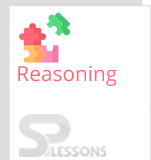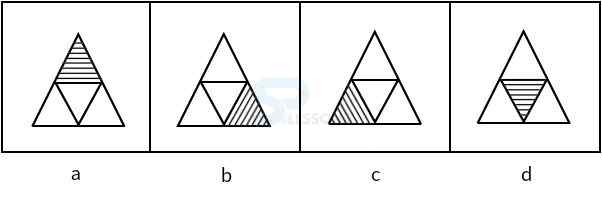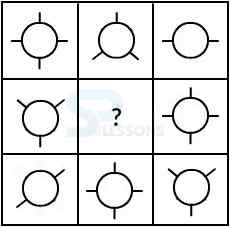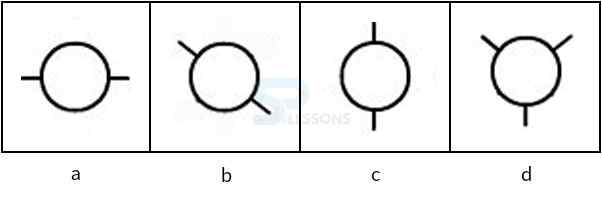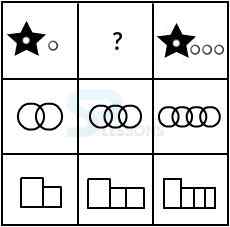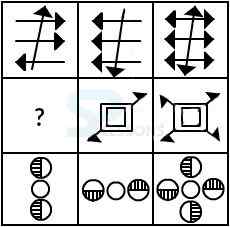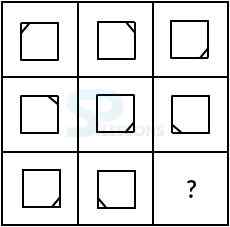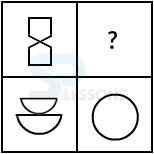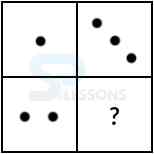 Description
Description
By group of figures, either (three x three) or (two x two) network is framed. These figures structure sets - either row-wise or column-wise and each of these sets takes after the same principle.
Analyse each of the sets to find out the regular rule and after that on its basis, the missing figure is to be recognised from an arrangement of choices, in order to finish the network.
Reasoning Ability -BANKING|SSC|RAILWAYS|INSURANCE|RECRUITMENT EXAMS – EBOOKS
 Model
Problems
Model
Problems
Model 1: Select which of the answer figures a, b, c and d finishes the figure matrix?
Solution:
The second figure shapes the inner most and the peripheral components of the third figure and the first figure frames the centre component of the third figure in each row.
Hence, figure (a) is correct answer.
Model 2: Select which of the answer figures a, b, c and d finishes the figure matrix?
Solution:
The second figure is acquired by shading one of the four sections of the primary figure and the third figure is acquired by shading two out of the four sections of the primary figure in every row.
Hence, figure (a) is correct answer.
Model 3: Select which of the answer figures a, b, c and d finishes the figure matrix?
Solution:
In each and every row and column:
A figure comprising of a circle and two line sections,
Other figure comprising of a circle and three line portions,
Another figure comprising of a circle and four line fragments.
Hence, figure (c) is correct answer.
Model 4: Select which of the answer figures a, b, c and d finishes the figure matrix?
Solution:
The second figure is acquired by clearing the outermost component of the main figure and the third figure is acquired by clearing the outermost element of the second figure in each segment.
Hence, figure (d) is the correct answer.
Model 5: Select which of the answer figures a, b, c and d finishes the figure matrix?
Solution:
The second figure is acquired from the primary figure by expanding the quantity of littler components by one and the third figure is gotten from the second figure by expanding the quantity of littler components by one in every line.
Hence, figure (a) is correct answer.
Model 6: Select which of the answer figures a, b, c and d finishes the figure matrix?
Solution:
The third figure is a mix of the first and the second figure in each row.
Hence, figure (b) is correct answer.
Model 7: Select which of the answer figures a, b, c and d finishes the figure matrix?
Solution:
The second figure is acquired from the first figure by switching the heading of the right hand side arrow and the third figure is acquired from the second figure by turning around the course of both the arrow in each row.
Hence, figure (d) is correct answer.
Model 8: Select which of the answer figures a, b, c and d finishes the figure matrix?
Solution:
By rotating first figure through 90 degrees clock wise direction, the second figure is obtained.
Similarly, by rotating second figure through 90 degrees clock wise direction, the third figure is obtained.
Hence, figure (c) is correct answer.
Model 9: Select which of the answer figures a, b, c and d finishes the figure matrix?
Solution:
The two sections of the primary figure are modified and joined along the more drawn out sides.
The common side is then lost to frame the second figure.
Hence, figure (b) is correct answer.
Model 10: Select which of the answer figures a, b, c and d finishes the figure matrix?
Solution:
In the upper-row quantity of dots in the second figure is thrice the number of dots in the first figure.
Similarly, in the lower-row, the quantity of dots in the second figure must be thrice the number of dots in the first figure.
So, the number of dots in the missing figure must be 2 x 3 = 6.
Hence, figure (d) is correct answer.
